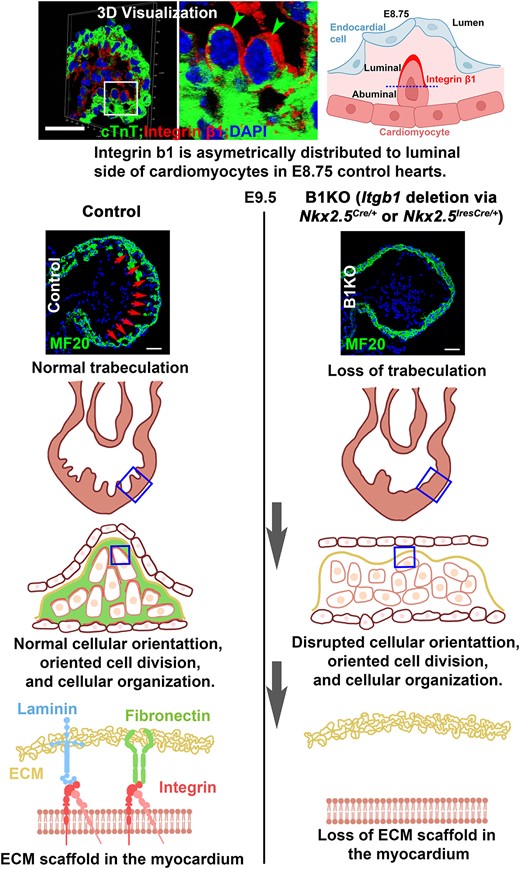2024-06-10 ヒューストン大学(UH)
<関連情報>
- https://uh.edu/news-events/stories/2024/june/06102024-mingfu-wu-heart-developing-spongy-disease.php
- https://academic.oup.com/cardiovascres/advance-article/doi/10.1093/cvr/cvae111/7682072
β1インテグリンは心室壁形成時の細胞挙動と心筋細胞組織を制御する β1 integrins regulate cellular behaviour and cardiomyocyte organization during ventricular wall formation
Lianjie Miao, Yangyang Lu, Anika Nusrat, Luqi Zhao, Micah Castillo, Yongqi Xiao, Hongyang Guo, Yu Liu, Preethi Gunaratne, Robert J Schwartz …
Cardiovascular Research Published:24 May 2024
DOI:https://doi.org/10.1093/cvr/cvae111
Abstract
Aims
The mechanisms regulating the cellular behaviour and cardiomyocyte organization during ventricular wall morphogenesis are poorly understood. Cardiomyocytes are surrounded by extracellular matrix (ECM) and interact with ECM via integrins. This study aims to determine whether and how β1 integrins regulate cardiomyocyte behaviour and organization during ventricular wall morphogenesis in the mouse.
Methods and results
We applied mRNA deep sequencing and immunostaining to determine the expression repertoires of α/β integrins and their ligands in the embryonic heart. Integrin β1 subunit (β1) and some of its ECM ligands are asymmetrically distributed and enriched in the luminal side of cardiomyocytes, and fibronectin surrounds cardiomyocytes, creating a network for them. Itgb1, which encodes the β1, was deleted via Nkx2.5Cre/+ to generate myocardial-specific Itgb1 knockout (B1KO) mice. B1KO hearts display an absence of a trabecular zone but a thicker compact zone. The levels of hyaluronic acid and versican, essential for trabecular initiation, were not significantly different between control and B1KO. Instead, fibronectin, a ligand of β1, was absent in the myocardium of B1KO hearts. Furthermore, B1KO cardiomyocytes display a random cellular orientation and fail to undergo perpendicular cell division, be organized properly, and establish the proper tissue architecture to form trabeculae. Mosaic clonal lineage tracing showed that Itgb1 regulates cardiomyocyte transmural migration and proliferation autonomously.
Conclusion
β1 is asymmetrically localized in the cardiomyocytes, and some of its ECM ligands are enriched along the luminal side of the myocardium, and fibronectin surrounds cardiomyocytes. β1 integrins are required for cardiomyocytes to attach to the ECM network. This engagement provides structural support for cardiomyocytes to maintain shape, undergo perpendicular division, and establish cellular organization. Deletion of Itgb1 leads to loss of β1 and fibronectin and prevents cardiomyocytes from engaging the ECM network, resulting in failure to establish tissue architecture to form trabeculae.

Graphical Abstract


